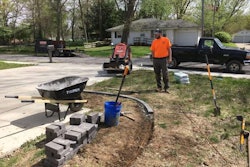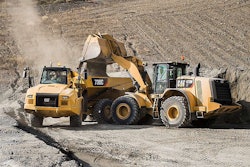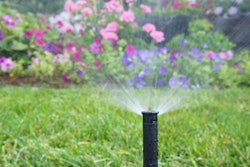
For customers who prefer to maximize their landscape space, suggesting plants that grow up rather than out can be a good idea.
Showcasing a few vine plants will not only let your clients get more plants in a space, it will also create a unique look to have shoots growing skyward. This also gives them the option of looking into trellises or other vertical structures that will give their vines the chance to climb.
Climbing plants all ascend in particular ways. Some will wrap, some adhere and some curl, and knowing which plants do what will help you find the look your customer craves.
Tendrils
There are two types of tendril vines: stem and leaf. Examples of stem tendrils are passionflowers and grapes, while leaf tendrils can be found in the form of sweet peas and Chilean glory flowers. Stem tendrils are shoots that grow out of the stem, and leaf tendrils look similar but are actually modified leaves that emerge from a leaf node.
Tendrils are wiry, skinny structures along the plant’s stem that can reach around in the air until they come in contact with something they can grab. When contact is made, the tendrils will curl and form a coil that then allows the plant to either adjust the degree of tension or pull on the support.
Plants with tendrils need handholds in the form of horizontal supports, such as netting branches with many small side shoots and horizontal strings attached to posts or bamboo poles. Make sure that the strings are not positioned more than four inches apart, or the newer tendrils may not be able to reach the next level of string. The tendrils will also need to wrap around something thin, such as string or wire, that’s no more than about ¼ inch in diameter.
Twiners
Morning glories, pole beans and honeysuckle, are just a few examples of twiners, and there are two important differences among twiners: they either have twinning stems or twinning leaves.
Those with twinning leaves use their leaves like tendrils to twist around wires, string and more. For these, be sure to provide enough support for the leaf stem to curl around.
For those with twinning stems, they tend to twist around anything they touch. Depending on the species, their stems will wind clockwise or counterclockwise. Wisteria is another famous twiner, and as you know they can become extremely heavy. Be sure to provide a strong structure and support if you know the vine is a perennial that will grow large.
Scramblers
Rambling roses and bougainvillea are two plants that fall into the category of scrambler. These have flexible, long stems that may look like vines, but they aren’t able to climb on their own. Scramblers can sometimes have thorns that help them grip stems close to them, but if you want them to climb they must be tacked into place and most likely tied up with sturdy string or wire.
Adhesive pads
For plants with stem tendrils with touch-sensitive adhesive pads that allow them to stick to most surfaces, take a look at Boston ivy and Virginia creeper. These climbers attach themselves to the faces of buildings or the trunks of trees, but if not provided with vertical support they will begin to crawl sideways and attach to whatever is in their path.
Clinging stem roots
This last group uses their clinging stems to attach themselves. Their stems produce a cluster of stout, short roots that can cling to almost any surface. Some you may be familiar with are the climbing hydrangea and most ivies, like English ivy. These climbers can damage paint work and mortar if you try to remove them from a structure, so exercise caution.
Training them to climb
Once you’ve decided what vine you plan to use in your customer’s landscape, it’s time to teach it to climb. The first step to training your vines to climb is to have support wires in place on the structure before any plants are introduced. After this, the climber should be planted 12-18 inches from the base of the wall to ensure there’s room for root development and for catching rain.
Untwine the climber to let it spread its stems, but leave them still attached to their cane supports. Using three bamboo canes you can train it to climb at an angle to reach the wire supports. Put the bamboo canes under the wires to keep them held in place and adjust the positioning the create a fan shape.
The next step is to tie the stems and canes to the wire supports. Using garden twine is preferable to wire because wire can potentially damage the stems and leaves. After the main stems have been trained into the basic fan shape, you can then prune off any weak growth that won’t contribute to the framework. The rest, as they say, will be history.










